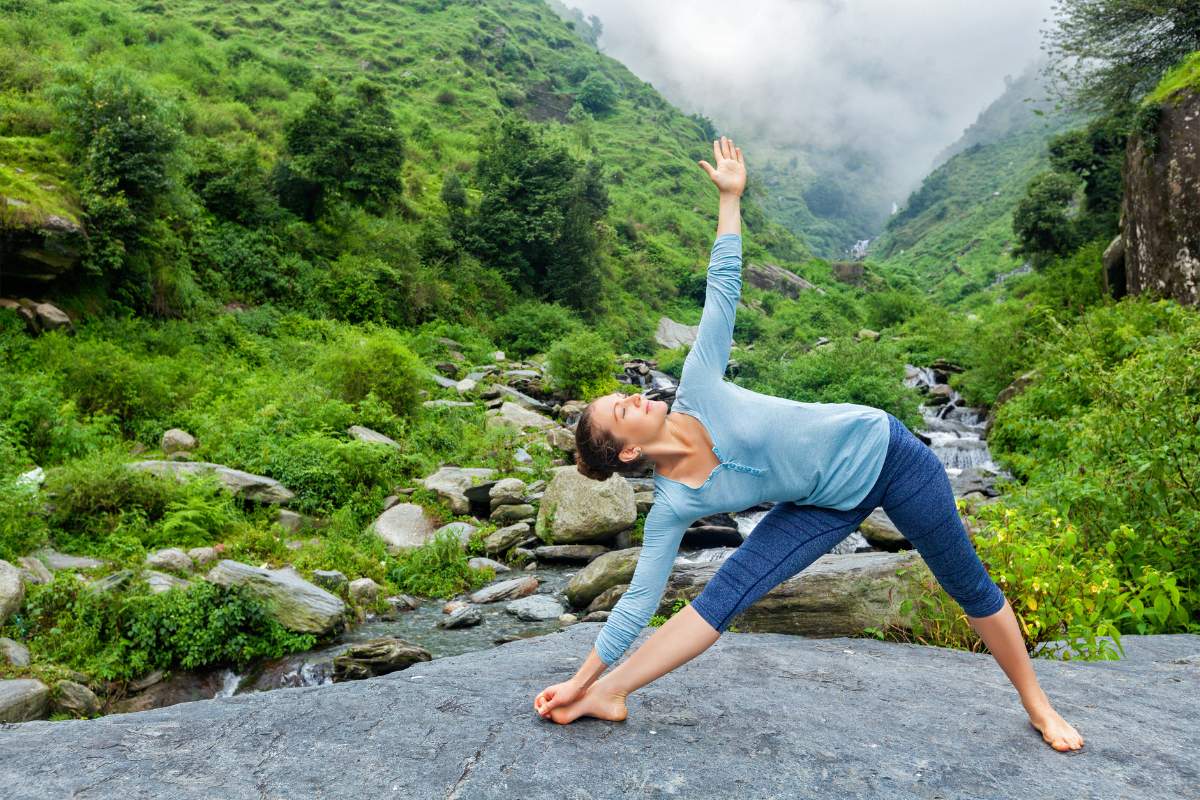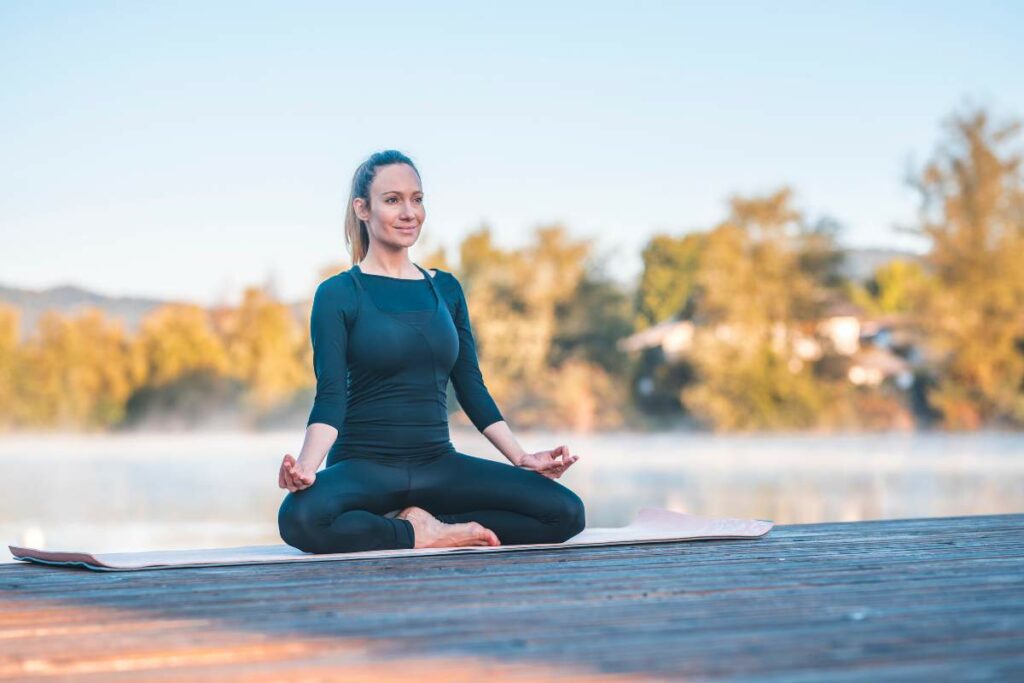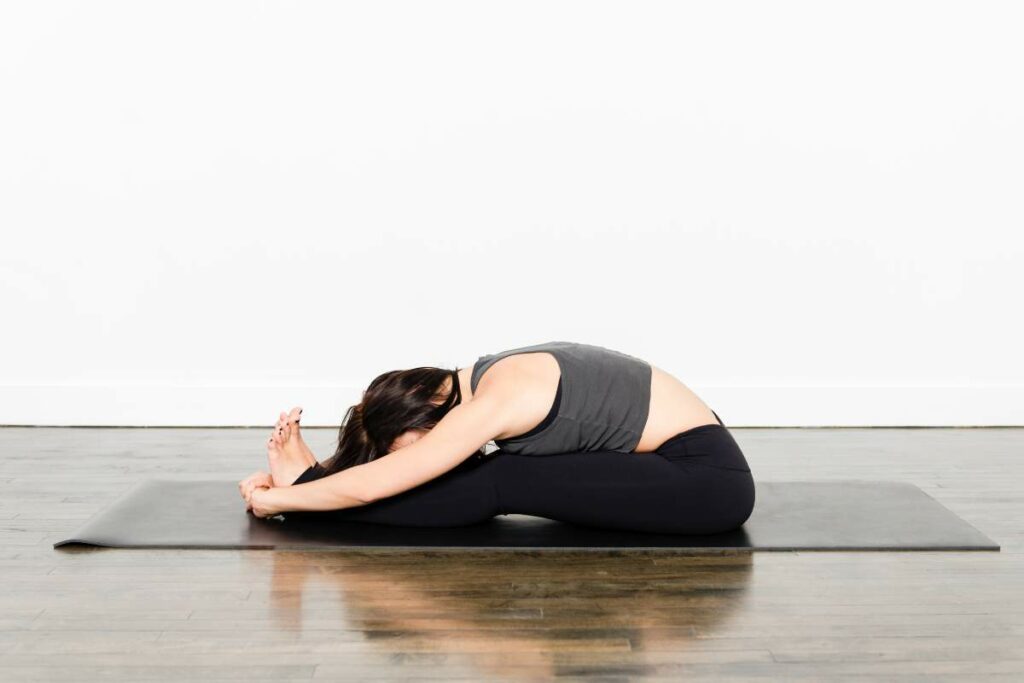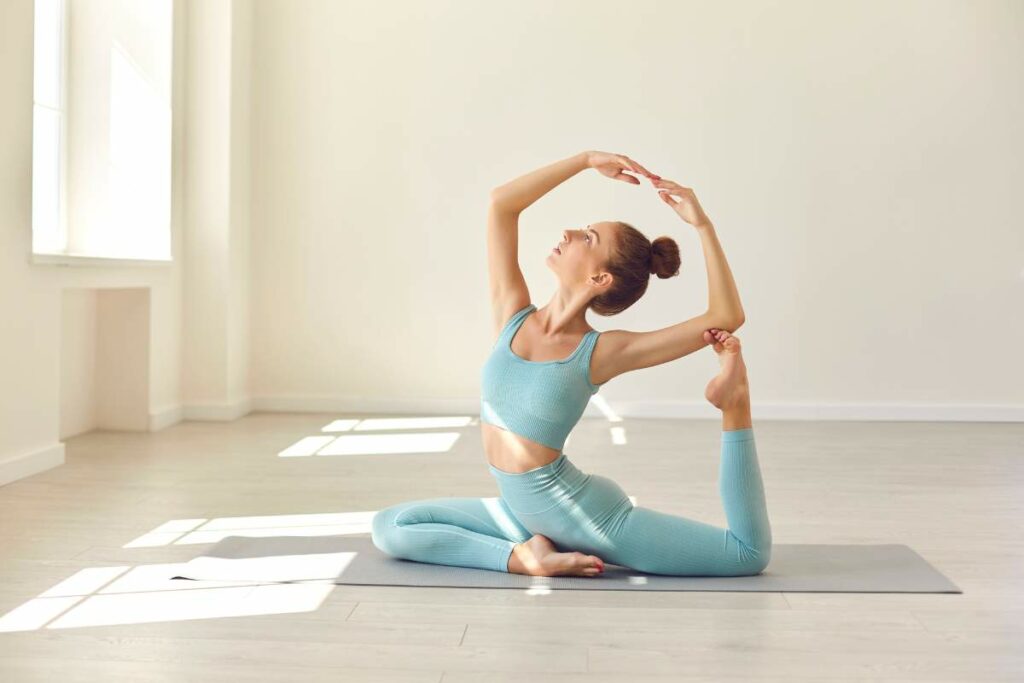Ashtanga Yoga: Everything You Need to Know
Curious about adding a little oomph to your yoga routine? Or maybe you’re looking to unite the physical and spiritual in a dynamic way?
Ashtanga Yoga could be just the ticket. This style of yoga is dynamic, disciplined, and deeply rooted in ancient philosophy.
Ready to learn about what Ashtanga Yoga is, its rich history, its key principles, the famous Six Series, and why it might just be the practice you’ve been searching for? Let’s get to it!
Related Article: Exploring Different Styles of Yoga: Which One Suits You Best?

This post may contain affiliate links, which helps keep this content free. Please read our disclosure for more info.
What is Ashtanga Yoga?
This isn’t your average yoga class; it’s a specialized form of yoga where your breath and movements are in total sync.
The name ‘Ashtanga’ refers to the Eight Limbs, which come from age-old yoga philosophy. This practice isn’t just about the physical; it’s deeply rooted in ancient wisdom.
And if you’re wondering how Ashtanga differs from other styles like Hatha and Vinyasa, here’s the scoop: Ashtanga is unique in its disciplined approach.
While other styles let you mix and match poses, Ashtanga lays it all out for you. You follow a predetermined sequence of poses, and each one prepares you for the next.
It’s a progressive build-up that aims to boost not just your flexibility but also your mental acumen. Ashtanga isn’t your regular yoga—it’s yoga with a mission.
History of Ashtanga Yoga

Yoga isn’t something that just popped up overnight or was invented to be the next big wellness trend.
The practice of Ashtanga Yoga has deep historical roots. Originating from an ancient Indian manuscript called the Yoga Korunta, Ashtanga Yoga has quite the backstory.
This manuscript was discovered by T. Krishnamacharya, an influential figure in modern yoga, in the early 20th century. He passed on this knowledge to his student K. Pattabhi Jois, who then became the main proponent of Ashtanga Yoga as we know it today.
Jois didn’t just teach it; he also refined and defined the methodology, founding the Ashtanga Yoga Research Institute in Mysore, India, in 1948.
You might be interested to know that it wasn’t just an Indian phenomenon for long. K. Pattabhi Jois and his disciples brought Ashtanga Yoga to the world’s attention.
By the late 20th century, this form of yoga had spread like wildfire, catching the attention of wellness enthusiasts far beyond the Indian subcontinent.
Nowadays, you can find Ashtanga Yoga classes pretty much everywhere in the world, from New York to Tokyo.
Key Principles of Ashtanga Yoga
Getting to the heart of Ashtanga Yoga, you’ll find it’s far more than just a string of poses. This specialized practice is built on key tenets that act like the special sauce, adding that unique flavor and transformative power to your yoga experience.

Vinyasa
First up, let’s talk about Vinyasa. This is the heartbeat of Ashtanga Yoga. You might have heard the term “Vinyasa” thrown around in other yoga classes, but here it has a specific role.
It’s all about flow and synchronization. You link each movement to your breath—so, for example, you extend when you inhale and bend when you exhale.
This practice isn’t just physically engaging; it also turns each session into a moving meditation. Your breath sets the rhythm, and your body follows. Pretty neat, right?
Tristhana
Next in line is Tristhana. If Vinyasa is the heartbeat, then consider Tristhana the vital signs of your Ashtanga practice.
This principle comprises three elements: posture, breathing, and looking place (Drishti).
- Posture: This isn’t just about standing tall or sitting right. It’s about how you engage your muscles, how you distribute your weight, and how you position your body in each pose.
- Breathing: Deep, rhythmic, and controlled—that’s the kind of breathing we aim for in Ashtanga. It’s not just inhale-exhale; it’s about mindful breathing that complements each pose.
- Drishti: This is your looking place, your focal point. Whether it’s the tip of your nose or a point on the horizon, focusing your gaze helps you maintain balance and concentration.
When you get these three elements right, it’s like hitting the yoga jackpot!
Bandhas
Bandhas are known as “energy locks,” and their role is essentially to act as energy managers during your practice.

These techniques help you channel your internal energy in a more focused way. By mastering your Bandhas, you’re putting yourself in the driver’s seat, controlling how energy flows through your body during the practice.
Mula Bandha: The Root Lock
Starting with Mula Bandha, or the “root lock,” this technique is all about grounding your energy. Imagine a string pulling from the base of your spine down to the ground.
To engage Mula Bandha, you tighten the muscles around your pelvic and perineum area. The effect? Enhanced stability and a centered feeling that helps you maintain balance in various poses.
Uddiyana Bandha: The Abdominal Lock
Next, we have Uddiyana Bandha, often termed the “abdominal lock.” This isn’t about toning your abs—though that might be a happy side effect!
The real aim is to control your prana, or life energy, by drawing your abdominal muscles towards your spine.
Engaging Uddiyana Bandha can aid in breath control and offer better support for your spine during more complex poses. Plus, it helps in maintaining the natural curvature of the lower back, reducing the risk of injuries.
Jalandhara Bandha: The Throat Lock
Last on the list is Jalandhara Bandha, or the “throat lock.” To engage this, you lower your chin down to your chest in specific poses.
Why is this important? This technique is believed to regulate the circulatory and respiratory systems, slowing down your heart rate and calming your mind.
It also helps you maintain focus, particularly when you’re doing poses that require a high level of concentration.
The Big Three Bandhas that help manage your body’s energy during Ashtanga Yoga are not just optional add-ons; they are essential elements that elevate your Ashtanga practice from routine exercise to a transformative experience.
When you combine these Bandhas with the other core principles of Vinyasa and Tristhana, you’re not merely practicing Ashtanga Yoga—you’re embodying it.
The Six Series: Your Ashtanga Progression Path
Moving on to the Six Series in Ashtanga Yoga, you’ll find that each one has a unique set of challenges and benefits. Whether you’re a beginner or an advanced yogi, there’s a series that matches your level and keeps you engaged.

Primary Series: The Building Blocks
First up is the Primary Series, also known as “Yoga Chikitsa” or Yoga Therapy. This is where everyone starts, and for a good reason.
It aims to build a solid foundation by focusing on aligning your body and detoxifying your system.
This series features poses that improve your flexibility, build muscle strength, and help you understand the basic techniques of Ashtanga Yoga. It’s like learning the alphabet before you start writing sentences.
Intermediate Series: The Energy Highway
The next stop is the Intermediate Series, also called “Nadi Shodhana,” which means cleansing of the energy channels.
This series takes things up a notch by introducing poses that cleanse the nervous system and open up the energy pathways.
If the Primary Series is about physical alignment, the Intermediate Series aims to align your internal energy. Get ready for deeper backbends, more complicated twists, and a lot of inner work.
Four Advanced Series
Now, for the yogis who are ready for some serious commitment, the Four Advanced Series await.
These are often termed “Sthira Bhaga,” which means the state of being that is stable yet joyful. Each of these advanced series has its unique focus and challenge:

- Advanced A: Known for challenging arm balances and playful inversions.
- Advanced B: Introduces complex postures that require deep backbends and challenging forward bends.
- Advanced C: In this series, prepare to test your limits with some of the most intricate poses in Ashtanga Yoga.
- Advanced D: This is the pinnacle, featuring poses that only the most dedicated and experienced Ashtangis reach. It is like earning a black belt in yoga!
In these advanced series, the poses become increasingly complex, and they aren’t just designed to test your flexibility and strength; they also demand mental focus and spiritual engagement.
Whether you’re just starting out or are an Ashtanga veteran, there’s always a new challenge waiting for you. The Six Series offer a well-structured path for growth, not just physically but also spiritually and mentally. It’s a built-in roadmap for your yoga development.
Benefits of Ashtanga Yoga
Ashtanga offers a trifecta of advantages that hit the physical, mental, and spiritual fronts.

Physical Benefits
Starting with the physical, one of the major pros is increased strength. Those Chaturangas and Warriors are basically your gym workout in disguise.
With consistent practice, you can look forward to toned arms, a strong core, and improved posture.
Then there’s flexibility. The series of poses you’ll go through are designed to stretch your muscles and increase your range of motion over time.
Even if touching your toes seems like an Olympic feat right now, with dedication, you’ll find yourself becoming more limber.
And let’s not forget endurance. Completing the various series, especially as they get more challenging, builds up your stamina.
Not just muscle stamina, but also cardiovascular health. You’ll find that you can hold poses for longer periods and your overall energy levels may get a boost too.
Mental Benefits

Switching gears to the mental side, Ashtanga Yoga sharpens your focus like a well-aimed arrow.
With each pose requiring attention to breathing, posture, and gaze, your multitasking skills get a workout, too.
Relaxation is another mental bonus. Although the practice can be physically demanding, the emphasis on breath and movement synchronization helps you enter a state of flow, easing stress and tension from your mind.
Spiritual Benefits
Last but not least, the spiritual. The practice of Ashtanga Yoga fosters a deep sense of mindfulness.
Being present in the moment is a cornerstone of the practice. This cultivates an inner awareness that can extend to other areas of your life, making you more attuned to your thoughts and feelings.
The benefits of Ashtanga Yoga are manifold and holistic, offering something for everyone, whether you’re focused on physical fitness, mental clarity, or spiritual growth. And that’s what makes this style of yoga so universally appealing.
Why You Should Give Ashtanga Yoga a Try

Thinking Ashtanga sounds a bit intense? It’s understandable, but let’s look at why you might want to reconsider.
This isn’t a one-size-fits-all, no-flexibility-required situation. Ashtanga offers a level for everyone, and its holistic approach to well-being might just be the thing you didn’t know you needed.
Beginner-Friendly
If you’re new to the yoga scene, Ashtanga has you covered. With the Primary Series focusing on basic poses and foundational techniques, it’s the perfect introduction.
You get to build your practice from the ground up, ensuring that you get the fundamentals right.
Variety for the Experienced
Already have some yoga experience? Perfect. The Intermediate and Advanced Series offer the variety and challenge that can reinvigorate your existing practice.
With Ashtanga, you’re not just repeating the same old poses; you’re advancing and growing. The sequence of poses adds an element of structure that can be refreshing if you’re used to more freeform practices.
Full-Body Workout
Maybe you’re the kind of person who thinks a good workout requires gym equipment. If that’s you, Ashtanga might just change your mind.
It’s essentially a full-body workout that uses your own body weight as resistance. Say goodbye to dumbbells and hello to poses that challenge your muscles in a whole new way.
Mental Reboot
But it’s not just a physical thing. If your mind feels as cluttered as a teenager’s bedroom, the focus required in Ashtanga can help clear the mental cobwebs.
Each session encourages you to zero in on your breath, gaze, and posture, leaving no room for yesterday’s worries or tomorrow’s to-do list.
Spiritual Tune-Up
If you’re seeking something deeper, the spiritual benefits can’t be ignored. Ashtanga’s emphasis on mindfulness and internal awareness can become a form of moving meditation.
Even if you’re not spiritual, the peace and clarity that come from this focus can be rewarding.
Commitment-Friendly
A busy schedule is no excuse! Ashtanga can be adapted to fit any lifestyle. With practice lengths that can vary, you can commit as much or as little time as you have available.
So, go ahead and give Ashtanga Yoga a try. With benefits that span the physical, mental, and spiritual, it’s an inclusive practice that could very well become the best part of your day.
Why Ashtanga Yoga Might Just Be Your Next Favorite Thing
So, there you have it! We’ve touched on what Ashtanga Yoga is, its rich history, and the key principles that define it.
We’ve broken down the Six Series that offer a variety of challenges, and we’ve even listed the multitude of benefits it brings to your physical, mental, and spiritual well-being.
Regardless of your experience level, Ashtanga Yoga has something to offer that can enrich your life in multiple ways.
Take the Next Step with the Yoga Fat Loss Bible
Ready to elevate your yoga experience? If deepening your practice while also focusing on weight loss sounds like your cup of tea, you should definitely check out the Yoga Fat Loss Bible.

This all-inclusive program pairs yoga routines with insightful diet tips to help you achieve your healthiest self.
What sets it apart? Well, it’s crafted for yogis at every stage. From total beginners to experienced hands, the program provides customized guidance and step-by-step tutorials to help you meet your fitness objectives.
The Yoga Fat Loss Bible could be the ideal supplement to your Ashtanga Yoga practice.


? Wow, this guide on Ashtanga Yoga is an absolute gem! ?♀️? I’ve been on a journey to deepen my yoga practice, and the prospect of adding a dynamic and disciplined element while exploring ancient philosophy sounds incredibly enticing. ?✨ Excited to delve into the rich history, grasp the key principles, and understand the significance of the famous Six Series. This feels like the perfect blend of physical and spiritual enrichment I’ve been seeking. Kudos for shedding light on what could be a transformative practice for many! ?